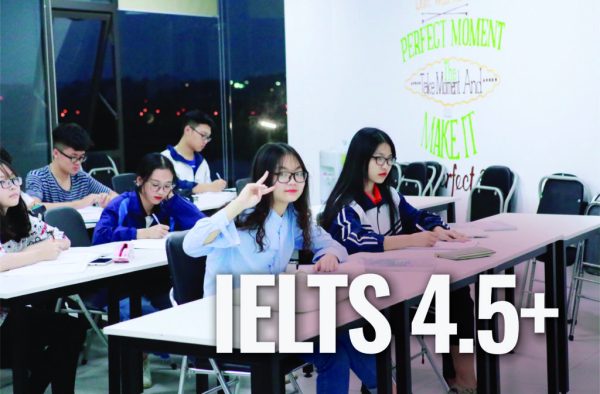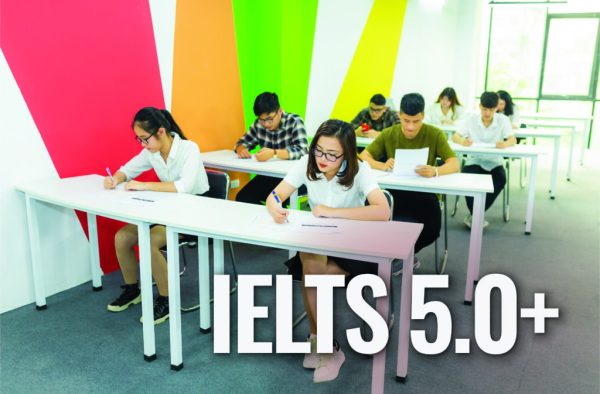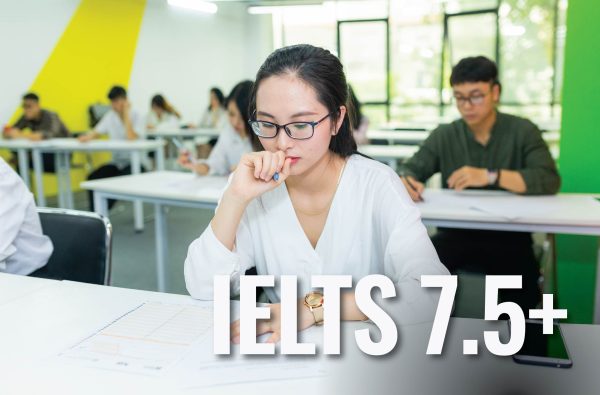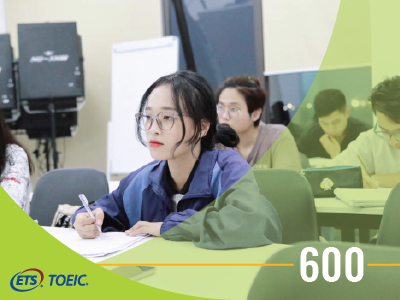Nhận tư vấn về lộ trình học
Attitudes towards Artificial Intelligence
25 Tháng Mười Hai, 2023 | 315 lượt xem
Giải đề IELTS Reading Cambridge 16. Test 4. Passage 3. Attitudes towards Artificial Intelligence. Thái độ đối với trí tuệ nhân tạo.

(Đoạn A)
Artificial intelligence (AI) can already predict the future. Police forces are using it to map when and where crime is likely to occur. Doctors can use it to predict when a patient is most likely to have a heart attack or stroke. Researchers are even trying to give AI imagination so it can plan for unexpected consequences.
Many decisions in our lives require a good forecast, and AI is almost always better at forecasting than we are. Yet for all these technological advances, we still seem to deeply lack confidence in Al predictions. Recent cases show that people don’t like relying on AI and prefer to trust human experts, even if these experts are wrong.
If we want AI to really benefit people, we need to find a way to get people to trust it. To do that, we need to understand why people are so reluctant to trust AI in the first place.
Trí tuệ nhân tạo (AI) đã có thể dự đoán trước tương lai. Lực lượng cảnh sát đang sử dụng nó để lập bản đồ thời gian và địa điểm có thể xảy ra các vụ phạm tội. Các bác sĩ có thể sử dụng nó để dự đoán thời điểm bệnh nhân dễ bị đau tim hoặc đột quỵ nhất. Các nhà nghiên cứu thậm chí đang cố gắng cung cấp khả năng tưởng tượng cho AI để nó có thể vạch ra những sự kiện không lường trước.
Nhiều quyết định trong cuộc sống của chúng ta đòi hỏi một dự báo tốt và AI hầu như luôn dự báo tốt hơn chúng ta. Tuy nhiên, mặc dù với tất cả những tiến bộ công nghệ này, chúng ta dường như vẫn vô cùng thiếu tin tưởng vào các dự đoán của Al. Các trường hợp gần đây cho thấy mọi người không thích dựa vào AI và thích tin tưởng vào các chuyên gia con người hơn, ngay cả khi các chuyên gia này sai.
Nếu muốn AI thực sự mang lại lợi ích cho con người, chúng ta cần tìm cách khiến mọi người tin tưởng vào nó. Để làm được điều đó, chúng ta cần hiểu tại sao mọi người lại miễn cưỡng tin tưởng vào AI ngay từ đầu.
(Đoạn B)
Take the case of Watson for Oncology, one of technology giant IBM’s supercomputer programs. Their attempt to promote this program to cancer doctors was a PR disaster. The AI promised to deliver top-quality recommendations on the treatment of 12 cancers that accounted for 80% of the world’s eases. But when doctors first interacted with Watson, they found themselves in a rather difficult situation. On the one hand, if Watson provided guidance about a treatment that coincided with their own opinions, physicians did not see much point in Watson’s recommendations. The supercomputer was simply telling them what they already knew, and these recommendations did not change the actual treatment.
Một ví dụ là trường hợp của Watson for Oncology, một trong những chương trình siêu máy tính khổng lồ của IBM. Nỗ lực quảng bá chương trình này cho các bác sĩ ung thư của họ là một thảm họa PR. AI đã hứa hẹn sẽ đưa ra các hướng điều trị chất lượng cho 12 bệnh ung thư mà đang chiếm 80% số ca điều trị trên thế giới. Nhưng khi các bác sĩ lần đầu tiên tương tác với Watson, họ thấy mình ở trong một tình huống khá khó khăn. Một mặt, nếu Watson đưa ra hướng dẫn về cách điều trị phù hợp với quan điểm của các bác sĩ, thì các họ sẽ không thấy hữu dụng gì trong các đề nghị của Watson. Siêu máy tính chỉ đơn giản nói cho họ biết những gì họ đã biết và những khuyến nghị này không thay đổi cách điều trị thực tế.
On the other hand, if Watson generated a recommendation that contradicted the experts’ opinion, doctors would typically conclude that Watson wasn’t competent. And the machine wouldn’t be able to explain why its treatment was plausible because its machine-learning algorithms were simply too complex to be fully understood by humans. Consequently, this has caused even more suspicion and disbelief, leading many doctors to ignore the seemingly outlandish AI recommendations and stick to their own expertise.
Mặt khác, nếu Watson đưa ra một khuyến nghị mâu thuẫn với ý kiến của các chuyên gia, các bác sĩ thường kết luận rằng Watson không đủ năng lực. Và cỗ máy sẽ không thể giải thích tại sao cách xử lý của nó lại hợp lý vì các thuật toán trên máy của nó đơn giản là quá phức tạp để con người có thể hiểu hết. Do đó, điều này thậm chí còn gây ra nhiều nghi ngờ và hoài nghi hơn, khiến nhiều bác sĩ bỏ qua các khuyến nghị có vẻ kỳ quặc của AI và chỉ làm theo chuyên môn của họ.
(Đoạn C)
This is just one example of people’s lack of confidence in AI and their reluctance to accept what AI has to offer. Trust in other people is often based on our understanding of how others think and having experience of their reliability. This helps create a psychological feeling of safety. AI, on the other hand, is still fairly new and unfamiliar to most people. Even if it can be technically explained (and that’s not always the case), AI’s decision-making process is usually too difficult for most people to comprehend. And interacting with something we don’t understand can cause anxiety and give us a sense that we’re losing control.
Đây chỉ là một ví dụ về việc mọi người thiếu niềm tin vào AI và họ miễn cưỡng chấp nhận những gì AI mang lại. Niềm tin vào người khác thường dựa trên sự hiểu biết của chúng ta về cách người khác nghĩ và có kinh nghiệm về độ tin cậy của họ. Điều này giúp tạo ra cảm giác an toàn về mặt tâm lý. Mặt khác, AI vẫn còn khá mới và xa lạ với hầu hết mọi người. Ngay cả khi nó có thể được giải thích về mặt kỹ thuật (và không phải lúc nào cũng vậy), quá trình ra quyết định của AI thường quá khó hiểu đối với hầu hết mọi người. Và việc tương tác với điều gì đó mà chúng ta không hiểu có thể gây lo lắng và cho chúng ta cảm giác rằng mình đang mất kiểm soát.
Many people are also simply not familiar with many instances of AI actually working, because it often happens in the background. Instead they are acutely aware of instances where AI goes wrong. Embarrassing AI failures receive a disproportionate amount of media attention, emphasising the message that we cannot rely on technology. Machine learning is not foolproof, in part because the humans who design it aren’t.
Nhiều người cũng đơn giản là không quen với nhiều trường hợp AI thực sự hoạt động, bởi vì nó thường diễn ra ở chế độ nền. Thay vào đó, họ nhận thức sâu sắc về những trường hợp AI gặp trục trặc. Những thất bại đáng xấu hổ của AI nhận được một lượng lớn sự chú ý của giới truyền thông, nhấn mạnh thông điệp rằng chúng ta không thể dựa vào công nghệ. Máy móc có khả năng học hỏi không phải là hoàn hảo, một phần vì những người thiết kế ra nó cũng không như vậy.
(Đoạn D)
Feelings about AI run deep. In a recent experiment, people from a range of backgrounds were given various sci-fi films about AI to watch and then asked questions about automation in everyday life. It was found that, regardless of whether the film they watched depicted AI in a positive or negative light, simply watching a cinematic vision of our technological future polarised the participants’ attitudes. Optimists became more extreme in their enthusiasm for AI and sceptics became even more guarded.
Cảm xúc về AI rất sâu sắc. Trong một thử nghiệm gần đây, những người có xuất thân khác nhau được cho xem nhiều bộ phim khoa học viễn tưởng về AI và sau đó đặt câu hỏi về tự động hóa trong cuộc sống hàng ngày. Người ta phát hiện ra rằng, bất kể bộ phim họ xem mô tả AI theo hướng tích cực hay tiêu cực, thì việc chỉ xem một viễn cảnh điện ảnh về tương lai công nghệ của chúng ta đã phân cực thái độ của những người tham gia. Những người lạc quan trở nên cực đoan hơn trong sự nhiệt tình của họ đối với AI và những người hoài nghi thậm chí còn trở nên đề phòng hơn.
This suggests people use relevant evidence about AI in a biased manner to support their existing attitudes, a deep-rooted human tendency known as “confirmation bias”. As AI is represented more and more in media and entertainment, it could lead to a society split between those who benefit from AI and those who reject it. More pertinently, refusing to accept the advantages offered by AI could place a large group of people at a serious disadvantage.
Điều này cho thấy mọi người sử dụng bằng chứng liên quan về AI theo cách thiên vị để hỗ trợ cho thái độ hiện có của họ, một xu hướng ăn sâu của con người được gọi là “thiên kiến xác nhận”. Khi AI được xuất hiện ngày càng nhiều trong các phương tiện truyền thông và giải trí, nó có thể dẫn đến sự chia rẽ xã hội giữa những người hưởng lợi từ AI và những người từ chối nó. Cụ thể hơn, việc từ chối chấp nhận những lợi thế do AI mang lại có thể khiến một bộ phận lớn gặp bất lợi nghiêm trọng.
(Đoạn E)
Fortunately, we already have some ideas about how to improve trust in AI. Simply having previous experience with AI can significantly improve people’s opinions about the technology, as was found in the study mentioned above. Evidence also suggests the more you use other technologies such as the internet, the more you trust them.
May mắn thay, chúng tôi đã có một số ý tưởng về cách cải thiện niềm tin vào AI. Chỉ cần có kinh nghiệm trước đây với AI có thể cải thiện đáng kể ý kiến của mọi người về công nghệ, như đã được tìm thấy trong nghiên cứu được đề cập ở trên. Bằng chứng cũng cho thấy bạn càng sử dụng nhiều công nghệ khác như internet, bạn càng tin tưởng chúng hơn.
Another solution may be to reveal more about the algorithms which AI uses and the purposes they serve. Several high-profile social media companies and online marketplaces already release transparency reports about government requests and surveillance disclosures. A similar practice for AI could help people have a better understanding of the way algorithmic decisions are made.
Một giải pháp khác có thể là tiết lộ thêm về các thuật toán mà AI sử dụng và mục đích mà chúng phục vụ. Một số công ty truyền thông xã hội nổi tiếng và thị trường trực tuyến đã công bố các báo cáo minh bạch về các yêu cầu của chính phủ và tiết lộ thông tin giám sát. Một thực tiễn tương tự đối với AI có thể giúp mọi người hiểu rõ hơn về cách đưa ra các quyết định bằng thuật toán.
(Đoạn F)
Research suggests that allowing people some control over AI decision-making could also improve trust and enable AI to learn from human experience. For example, one study showed that when people were allowed the freedom to slightly modify an algorithm, they felt more satisfied with its decisions, more likely to believe it was superior and more likely to use it in the future.
We don’t need to understand the intricate inner workings of AI systems, but if people are given a degree of responsibility for how they are implemented, they will be more willing to accept AI into their lives.
Nghiên cứu cho thấy rằng việc cho phép mọi người kiểm soát một số quyền quyết định của AI cũng có thể cải thiện lòng tin và cho phép AI học hỏi từ kinh nghiệm của con người. Ví dụ, một nghiên cứu cho thấy rằng khi mọi người được phép tự do sửa đổi một chút thuật toán, họ cảm thấy hài lòng hơn với các quyết định của thuật toán đó, có nhiều khả năng tin rằng thuật toán đó ưu việt hơn và có nhiều khả năng sẽ sử dụng thuật toán đó trong tương lai.
Chúng ta không cần phải hiểu hoạt động phức tạp bên trong của các hệ thống AI, nhưng nếu mọi người được giao một mức độ trách nhiệm nào đó về cách chúng được triển khai, họ sẽ sẵn sàng chấp nhận AI hơn trong cuộc sống của mình.
Questions 27-32
Reading Passage 3 has six sections, A-F.
Choose the correct heading for each section from the list of headings below.
| List of Headings i. An increasing divergence of attitudes towards AI ii. Reasons why we have more faith in human judgement than in AI iii. The superiority of AI projections over those made by humans iv. The process by which AI can help us make good decisions v. The advantages of involving users in AI processes vi. Widespread distrust of an AI innovation vii. Encouraging openness about how AI functions viii. A surprisingly successful AI application |
Giải thích đáp án các câu 27-32
Câu 27:
Paragraph A
=> Đáp án câu 27: iii – The superiority of AI projections over those made by humans
Đối chiếu các thông tin trong đoạn văn với tiêu đề:
AI projections = AI can predict the future
The superiority of AI projections over those made by humans = AI is almost always better at forecasting than we are
Artificial intelligence (AI) can already predict the future… Researchers are even trying to give AI imagination so it can plan for unexpected consequences. Many decisions in our lives require a good forecast, and AI is almost always better at forecasting than we are.
Câu 28:
Paragraph B
=> Đáp án câu 28: vi – Widespread distrust of an AI innovation
Đối chiếu các thông tin trong đoạn văn với tiêu đề:
widespread distrust = more suspicion and disbelief
Consequently, this has caused even more suspicion and disbelief, leading many doctors to ignore the seemingly outlandish AI recommendations and stick to their own expertise.
Câu 29:
Paragraph C
=> Đáp án câu 29: ii – Reasons why we have more faith in human judgement than in AI
Đối chiếu các thông tin trong đoạn văn với tiêu đề:
reasons = new and unfamiliar, difficult to comprehend, cause anxiety…
more faith in human judgement than in AI = lack of confidence in AI
This is just one example of people’s lack of confidence in AI and their reluctance to accept what Al has to offer. … Al, on the other hand, is still fairly new and unfamiliar to most people. Even if it can be technically explained (and that’s not always the case), AI’s decision-making process is usually too difficult for most people to comprehend. And interacting with something we don’t understand can cause anxiety and give us a sense that we’re losing control.
Câu 30:
Paragraph D
=> Đáp án câu 30: i – An increasing divergence of attitudes towards AI
Đối chiếu các thông tin trong đoạn văn với tiêu đề:
divergence of attitudes towards AI = polarised the participants’ attitudes, optimists + sceptics
It was found that, regardless of whether the film they watched depicted Al in a positive or negative light, simply watching a cinematic vision of our technological future polarised the participants’ attitudes. Optimists became more extreme in their enthusiasm for AI and sceptics became even more guarded.
Câu 31:
Paragraph E
=> Đáp án câu 31: vii – Encouraging openness about how AI functions
Đối chiếu các thông tin trong đoạn văn với tiêu đề:
Encouraging openness = reveal more about the algorithms which Al uses
how AI functions = the purposes they serve
Evidence also suggests the more you use other technologies such as the internet, the more you trust them. Another solution may be to reveal more about the algorithms which Al uses and the purposes they serve.
Câu 32:
Paragraph F
=> Đáp án câu 32: v – The advantages of involving users in AI processes
the advantages = could improve trust; enable AI to learn from human experience
involving users in AI processes = people some control over AI decision-making; people are given a degree of responsibility
Research suggests that allowing people some control over AI decision-making could also improve trust and enable AI to learn from human experience. … We don’t need to understand the intricate inner workings of AI systems, but if people are given a degree of responsibility for how they are implemented, they will be more willing to accept Al into their lives.
Questions 33-35
Choose the correct letter , A, B, C or D.
Câu 33
What is the writer doing in Section A?
A. providing a solution to a concern
B. justifying an opinion about an issue
C. highlighting the existence of a problem
D. explaining the reasons for a phenomenon
=> Đáp án câu 33: C
Dẫn chứng trong đoạn A:
Yet for all these technological advances, we still seem to deeply lack confidence in AI predictions.
Đối chiếu thông tin trong câu hỏi và bài đọc:
- the existence of a problem = to deeply lack confidence in AI predictions
Câu 34
According to Section C, why might some people be reluctant to accept AI?
A. They are afraid it will replace humans in decision-making jobs.
B. Its complexity makes them feel that they are at a disadvantage.
C. They would rather wait for the technology to be tested over a period of time.
D. Misunderstandings about how it works make it seem more challenging than it is.
=> Đáp án câu 34: B
Dẫn chứng trong đoạn C:
Even if it can be technically explained (and that’s not always the case), AI’s decision-making process is usually too difficult for most people to comprehend. And interacting with something we don’t understand can cause anxiety and give us a sense that we’re losing control.
Đối chiếu thông tin trong câu hỏi và bài đọc:
- complexity = too difficult for most people to comprehend
- makes them feel that they are at a disadvantage = cause anxiety + give us a sense that we’re losing control
Câu 35
What does the writer say about the media in Section C of the text?
A. It leads the public to be mistrustful of Al.
B. It devotes an excessive amount of attention to Al.
C. Its reports of incidents involving AI are often inaccurate.
D. It gives the impression that AI failures are due to designer error.
=> Đáp án câu 35: A
Dẫn chứng trong đoạn C:
Embarrassing AI failures receive a disproportionate amount of media attention, emphasising the message that we cannot rely on technology.
Đối chiếu thông tin trong câu hỏi và bài đọc:
- leads the public to be mistrustful of Al = emphasising the message that we cannot rely on technology
Questions 36-40
Do the following statements agree with the claims of the writer in Reading Passage 3?
Câu 36:
Subjective depictions of AI in sci-fi films make people change their opinions about automation.
=> Đáp án Câu 36: NO
Dẫn chứng trong đoạn D:
Thông tin đối lập trong câu hỏi và trong bài văn:
| Trong câu hỏi:make people change their opinions about automation | Trong bài văn regardless of whether the film they watched depicted Al in a positive or negative light, simply watching a cinematic vision of our technological future polarised the participants’ attitudes |
Câu 37:
Portrayals of AI in media and entertainment are likely to become more positive.
=> Đáp án Câu 37: NOT GIVEN
Dẫn chứng trong đoạn D:
As Al is represented more and more in media and entertainment, it could lead to a society split between those who benefit from AI and those who reject it.
Đoạn văn có nhắc đến các từ khóa media and entertainment, tuy nhiên không nhắc đến rằng chúng có thể trở nên tích cực (likely to become more positive).
Câu 38:
Rejection of the possibilities of AI may have a negative effect on many people’s lives.
=> Đáp án Câu 38: YES
Dẫn chứng trong đoạn D:
Thông tin trùng khớp trong câu hỏi và trong bài văn:
| Trong câu hỏi:rejection of the possibilities of AI have a negative effect on many people’s lives | Trong bài văn refusing to accept the advantages offered by AIplace a large group of people at a serious disadvantage |
Câu 39:
Familiarity with AI has very little impact on people’s attitudes to the technology.
=> Đáp án Câu 39: NO
Dẫn chứng trong đoạn E:
Thông tin đối lập trong câu hỏi và trong bài văn:
| Trong câu hỏi:familiarity with AIhas very little impact on people’s attitudes | Trong bài văn the more you use other technologiesthe more you trust them |
Câu 40:
AI applications which users are able to modify are more likely to gain consumer approval.
=> Đáp án Câu 40: YES
Dẫn chứng trong đoạn F:
Thông tin trùng khớp trong câu hỏi và trong bài văn:
| Trong câu hỏi:users are able to modify gain consumer approval | Trong bài văn people are given … responsibility for how they are implementedmore willing to accept Al into their lives |
Bí quyết chinh phục IELTS Reading
Để đạt điểm cao trong IELTS Reading, bạn nên nắm rõ tips và chiến lược để làm bài với từng dạng đề cụ thể. Dù scanning và skimming là 2 kỹ năng nhất định phải dùng trong bài thi IELTS nhưng tùy từng dạng, chúng ta sẽ áp dụng ở những bước khác nhau.
Hãy tiếp tục theo dõi chuyên mục IELTS Reading của Universal Language Center và cùng tìm hiểu bí quyết chinh phục từng dạng đề thi IELTS Reading bạn nhé!
Để liên tục đánh giá trình độ hiện tại, hãy tham khảo bài thi tại đây: http://m.me/universal.edu.vn/
Hoặc tham dự thi thử bài thi IELTS IDP miễn phí tại các cơ sở của Universal Language Center:
- Cơ Sở 01: 262 Lạc Trung, Hai Bà Trưng, Hà Nội
- Cơ Sở 02: 114 Hoàng Như Tiếp, Long Biên, Hà Nội
- Cơ Sở 03: 12/36 Phan Kế Bính, Ba Đình, Hà Nội
- Cơ Sở 04: 619 Nguyễn Văn Cừ, Long Biên, Hà Nội
- Cơ Sở 05: 23 Tô Vĩnh Diện, Thanh Xuân, Hà Nội
- Cơ Sở 06: 222 Lý Nam Đế, Tân Quang, Tuyên Quang
- VPTNĐK: 1/58 Việt Hưng, Long Biên, Hà Nội
Tham khảo khóa học IELTS Cam kết đầu ra 7.5+ tại Universal: https://universal.edu.vn/khoa-hoc/khoa-hoc-ielts-mastery/
ĐĂNG KÝ NHẬN TIN






